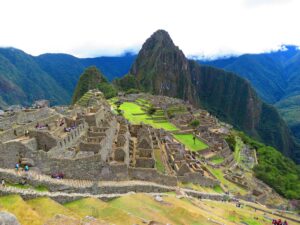Ancient ruins and historic landmarks are treasures of human history, offering a glimpse into past civilizations and cultural achievements. While visiting these iconic sites is an enriching experience, it’s essential to approach them with respect and responsibility to ensure their preservation for future generations. In this guide, we’ll explore the best practices for exploring ancient ruins and historic landmarks responsibly, emphasizing ethical tourism and cultural preservation.
Why Responsible Exploration Matters
Visiting ancient ruins and historic landmarks responsibly is not just about following rules—it’s about acknowledging the cultural and historical significance of these sites. Irresponsible tourism can lead to irreversible damage, erasing invaluable pieces of history.
The Impact of Irresponsible Tourism
- Physical Damage: Touching, climbing, or removing artifacts can cause deterioration.
- Environmental Degradation: Littering and over-tourism harm the surrounding environment.
- Cultural Disrespect: Ignoring local customs or sacred practices can offend communities.
By adopting responsible practices, we can minimize our impact and contribute to the preservation of these global treasures.
Tips for Exploring Ancient Ruins and Historic Landmarks Responsibly
1. Research the Site Before Visiting
Understanding the history, significance, and rules of a site helps you appreciate its value and avoid unintentional harm.
Key Steps:
- Read about the site’s history and cultural importance.
- Learn about local customs and etiquette.
- Check official guidelines or restrictions for visitors.
2. Follow Designated Paths and Signage
Ancient ruins are often fragile, and straying from marked paths can cause erosion or structural damage.
What to Do:
- Stick to designated walkways and avoid restricted areas.
- Respect barriers and signs indicating fragile structures.
3. Avoid Touching Artifacts and Structures
The oils and dirt from your hands can deteriorate ancient materials over time.
Best Practices:
- Look, don’t touch.
- Use a camera or binoculars to observe details from a distance.
4. Don’t Remove Souvenirs
Taking artifacts, stones, or plants from a historic site is not only unethical but often illegal.
Remember:
- Leave the site exactly as you found it.
- Purchase souvenirs from authorized vendors instead.
5. Respect Local Customs and Sacred Practices
Many historic landmarks are sacred to local communities. Showing respect enhances your experience and builds goodwill.
How to Show Respect:
- Dress modestly, especially in religious sites.
- Follow any rules regarding photography or behavior.
- Be mindful of local traditions and ceremonies.
6. Reduce Your Environmental Impact
Tourism can strain the ecosystems surrounding ancient ruins and landmarks. Practicing eco-friendly habits helps mitigate this impact.
Eco-Friendly Tips:
- Avoid single-use plastics and carry reusable items.
- Dispose of trash responsibly or take it with you.
- Use public transportation or carpool to reduce carbon emissions.
7. Support Local Communities
Many historic sites rely on tourism for their preservation and the well-being of local communities.
Ways to Help:
- Hire local guides for a more authentic and informed experience.
- Shop at local markets and eat at local restaurants.
- Donate to preservation efforts or heritage organizations.
Popular Ancient Ruins and How to Visit Responsibly
1. Machu Picchu, Peru
- Tip: Limit your visit to the regulated time slots and group sizes to reduce overcrowding.
- Avoid: Climbing on ruins or disturbing wildlife.

2. Angkor Wat, Cambodia
- Tip: Dress modestly and respect religious customs.
- Avoid: Using flash photography inside temples.

3. The Colosseum, Italy
- Tip: Stick to guided tours to learn the history while minimizing damage.
- Avoid: Leaving graffiti or littering.

4. Petra, Jordan
- Tip: Use marked paths to preserve the sandstone architecture.
- Avoid: Riding animals in extreme heat to ensure their welfare.

5. The Great Wall of China
- Tip: Visit less crowded sections to reduce wear and tear.
- Avoid: Removing bricks or stones as souvenirs.

The Role of Technology in Responsible Tourism
Modern technology offers tools to enhance your experience while minimizing your impact.
- Virtual Tours: Explore sites digitally to reduce physical strain on landmarks.
- Educational Apps: Use apps to learn about a site’s history and significance.
- Photography Ethics: Use drones or cameras responsibly, following local guidelines.
Benefits of Responsible Exploration
- Preservation for Future Generations: Protecting sites ensures they remain intact for years to come.
- Cultural Enrichment: Respectful visits foster understanding and appreciation of different cultures.
- Sustainable Tourism: Supporting local economies and minimizing environmental damage creates a positive impact.
Conclusion
Exploring ancient ruins and historic landmarks responsibly is both a privilege and a responsibility. By following ethical guidelines, respecting local cultures, and minimizing environmental impact, we can ensure these global treasures are preserved for future generations. Make your journey meaningful by becoming a steward of history and culture.
FAQs
1. Why is it important to explore ancient ruins responsibly?
Responsible exploration preserves the cultural, historical, and environmental integrity of these sites for future generations.
2. Can I take photos of historic landmarks?
Photography is often allowed, but always check local guidelines and avoid using flash in sensitive areas.
3. How can I support the preservation of ancient ruins?
Donate to heritage organizations, follow site rules, and hire local guides to support conservation efforts.
4. What should I avoid while visiting ancient ruins?
Avoid touching artifacts, straying off paths, and taking items from the site as souvenirs.
5. Are there eco-friendly ways to visit historic landmarks?
Yes, use reusable items, travel sustainably, and ensure your activities do not harm the environment or local communities.
YOU MIGHT ALSO LIKE THIS POST :-
https://traviebuddy.com/wp-admin/post.php?post=411&action=edit&classic-editor
